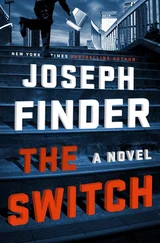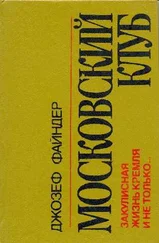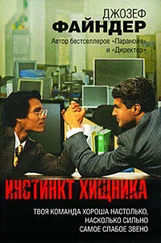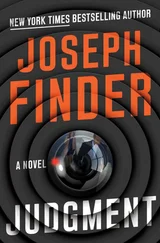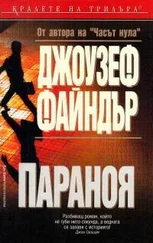“I appreciate it,” I said.
“And I told him that you knew the victim.”
“Barely,” I said.
“I told him you could be a time-line witness. Guy’s not stupid, he wants any help he can get. So just don’t stir up trouble, and we’ll be fine.”
I was issued Tyvek coveralls and shoe covers and a polypropylene hair-net. I had to put on a double set of latex gloves before entering the house.
In the small front room were a couple of easy chairs and a desk with an open MacBook on it: a small white laptop computer. Someone was dusting the window for prints, someone was taking pictures, and someone else was doing a diagram.
The lead detective on the case was a big bluff man nearing retirement named Lenehan. Without even introducing himself, he gave me a litany of orders, everything I couldn’t touch or move or look at, and as he ushered Garvin and me through the crowd in the front room, he said, “So you met with the victim just a couple of days before her death.”
“Three days ago,” I said.
“Did she indicate any concerns, like anyone stalking her, any enemies, anything like that?”
“No,” I said.
“One of her neighbors says he saw a government vehicle parked in the street in front of her house last night. Did she say anything about talking to the FBI, maybe related to her work?”
“Not at all.”
“I want to warn you, this might be upsetting.”
“I’ve been to crime scenes,” I said.
“Yeah, well,” the cop said, and his voice trailed off.
“Defensive wounds on the palms,” Garvin said.
Marjorie Ogonowski had clearly died struggling. Both of her hands were rigid claws. Duct tape over her mouth. Her glasses broken on the floor, a number marker next to them.
When I saw what had been done to the woman’s eyes, after the first wave of nausea had crested and subsided, I felt a surge of fury.
“The tape on her mouth,” I said. “You can see where it was taken off, then put back on.”
Garvin leaned close, lifted his glasses to his forehead, nodded.
“Whoever did it had to remove the tape so she could talk,” I said. “But put it back on when he got what he wanted.”
“Or didn’t,” Garvin pointed out.
“Who found the body?” I asked.
“She didn’t show up for work, and apparently she never missed a day without calling. When her secretary couldn’t reach her on the phone, she called a neighbor and asked them to check in on her, see if everything was okay.”
“The secretary knew who the neighbors were?”
“Nah. She said she searched for phone numbers by address online.”
“The neighbor had a key?”
“Not the one who the secretary called. That was the guy who lives across the street – the one who noticed the car. He called the neighbor who lives next door, and that woman had a key. Unlocked the front door and walked in and found her here. Didn’t take long. It’s not a big house.”
“Mind if I take another look at the front room?” I said.
I stood amid the bustle, looking from the open front door to the little desk with the laptop on it to the two easy chairs. “Was there a desk chair?” I asked.
“Nothing’s been moved,” Lenehan said.
“She didn’t work at that desk,” I said. “There’s no chair. She used the laptop at the desk in her bedroom.”
“Your point?” Lenehan said.
I approached the two chairs, saw the end table next to one of them, several remote controls neatly lined up. “No sign of forced entry, right?”
“She opened the door for him,” Lenehan said.
“She was expecting him,” I said. I pointed at a small white remote control, much smaller than the ones for the cable box and the TV. “That’s for her MacBook.”
“Maybe she watched movies or TV shows on it,” Garvin suggested.
“No,” I said. “Too far away. Twelve-inch screen. Plus, I don’t think she was the type to watch TV or movies. She worked all the time. The computer’s on, isn’t it?”
“Looks like it’s off,” Lenehan said.
“No, it’s just gone to sleep,” I said. “Okay with you if I touch the touchpad.”
“For what?”
“Take the computer out of sleep mode. See what’s on it.”
“I don’t think Crime Scene’s going to want you to do that,” Lenehan said. “Prints, DNA, all that. But hold on a second.” He grabbed someone, had a quick conversation. He turned back to me after half a minute. “Okay, go ahead. They’ve got to fume it for prints under the hood anyway.”
I ran a gloved finger across the MacBook’s touchpad, and a screensaver appeared – an image of a planet, which looked like Mars. I clicked the touchpad’s button, and the screensaver went away. A large box appeared on the screen: a photograph of me.
It was moving as I moved, as my face moved in closer to the camera lens on the lid of the laptop. Recording my image in real time. You clicked a button, and it froze the picture.
Beneath the big box was a row of smaller snapshots. They were all pictures of the room we were in. All showed a man and a woman sitting in the chairs.
Marjorie Ogonowski and a man in a suit and tie with hunched shoulders and a fleshy, pockmarked face.
Lenehan and Garvin approached. “What’s that?” Lenehan said.
“Photo Booth,” I said. “It’s a Macintosh photo application.” I clicked on the touchpad button to enlarge the large photo still more, zoom in on the figures in the chairs.
“She took the pictures while they were sitting there talking,” I said.
I document everything , she’d said.
“How?” said Garvin.
“Using the computer’s remote control.” I pointed. “On the table next to where she was sitting.”
“That’s our guy,” Lenehan said, but it sounded more like a question than a statement.
“That’s our guy,” I said.
“He let her take his picture?”
“He didn’t notice. The computer’s sound was turned off, so he didn’t hear that simulated camera-shutter noise it usually makes.”
“She took his picture without him knowing?” said Lenehan.
“Right,” I said. “Which indicates she didn’t trust him. She wasn’t sure he was who he said he was.”
“He didn’t leave prints anywhere,” Lenehan said. “He was probably wearing gloves. No wonder she was suspicious.”
“I’m sure he didn’t arrive at her door wearing gloves,” I said. “He was just careful about what he touched, and he made sure to wipe down afterward. He’s a pro. Now, if you don’t mind, I’m going to e-mail myself his picture.”
“What for?” Lenehan said.
“We’ve got a workstation at my office with FaceExaminer on it.”
The Maryland homicide cop didn’t know what I was talking about, but that wasn’t surprising; they weren’t likely to have access to technology like that. “It does face recognition by running a mug shot against a database of known images. Same technology the Las Vegas casinos use to catch card counters.”
“What does that mean, ‘known images’? Where’s this database from?”
“We’ll have to get cooperation from the government,” I said. “So we can tap into their facial databases of all security ID photos. State, Defense, Homeland Security, the intelligence community.” I turned to Garvin. “It’ll go a lot quicker if you make the call.”
“To who?”
“I have a theory,” I said. “I think our guy used to be a government employee.”
Dorothy answered her cell phone abruptly: “Heller, if you keep calling me, I’m not going to be ready in time.”
“I need you to go back in to the office and do something,” I said.
“I don’t think you heard me when I told you I got fired.”
Читать дальше


